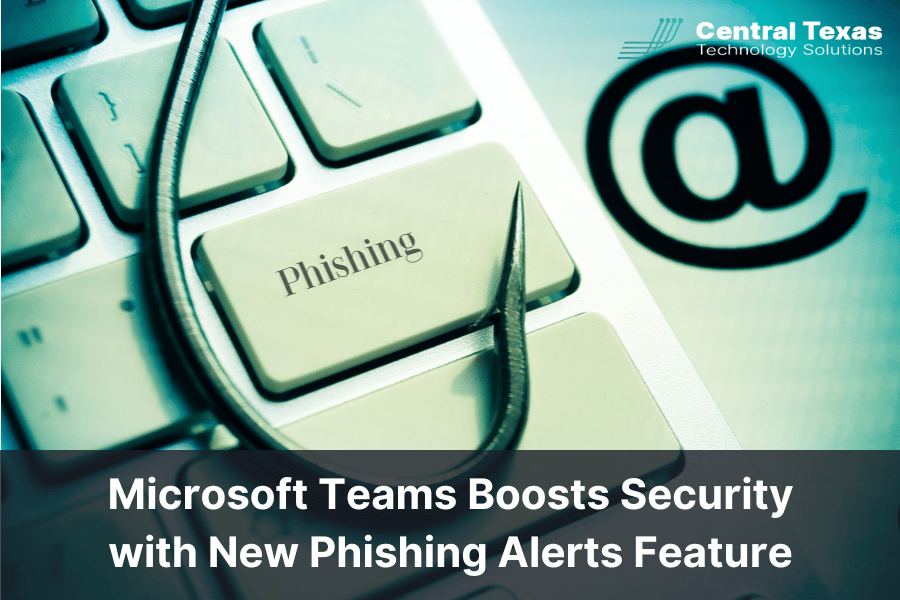
Cybercriminals will stop at nothing to infiltrate organizations, and phishing attacks remain one of their most common — and successful — tactics. Despite efforts to build awareness and train employees to recognize fake messages, hackers continue to successfully impersonate individuals and brands, tricking recipients into divulging sensitive information. Microsoft Teams, a widely used collaboration platform, has become a prime target for these bad actors. However, new phishing alerts aim to curb the attacks and enhance security for users.
How Microsoft Teams Phishing Alerts Work
Microsoft has introduced phishing alerts on Teams to protect users from malicious actors. Now, when a chat message arrives from an external domain, the system automatically checks for signs of phishing. If the message appears suspicious, a pop-up warning alerts the user with options to accept or block the message.
This proactive approach doesn’t just stop at warnings; it empowers users to make informed decisions about their communications. Here’s how the new phishing protection works:
- Automated Detection: The system scans the first message from any external sender for potential risks.
- Pop-Up Alerts: Suspicious messages trigger a warning that allows users to either accept or block the communication.
- User Empowerment: By presenting the choice to proceed or block, Microsoft Teams shares the responsibility of security with users, encouraging them to stay vigilant.
This update was rolled out automatically, meaning network administrators didn’t have to take any action to enable this new security feature.
Protecting Your Network from Phishing Attacks
Phishing attacks on companies using Microsoft Teams can be insidious and damaging. A recent wave of attacks by a Russian cybercrime group highlighted the urgency for Microsoft Teams phishing alerts. In this incident, attackers impersonated IT personnel via Teams, attempting to gain login credentials and remote access to user systems.
The consequences of a successful phishing attack can be severe:
- Data Breaches: Stolen credentials can lead to unauthorized access to sensitive information.
- Malware Infections: Phishing often serves as a gateway for deploying malware and ransomware.
- Financial Loss: Organizations can face significant financial penalties and recovery costs.
With phishing alerts now integrated into Microsoft Teams, organizations have an additional layer of protection. However, security doesn’t stop with automated alerts. Continuous employee education and robust cybersecurity policies are essential to prevent attacks.
Training Employees to Recognize Phishing Alerts
While Microsoft Teams phishing alerts significantly bolster security, they are not foolproof. Employees must still be trained to recognize and respond to phishing attempts effectively. Here are some practical tips for reinforcing cybersecurity awareness in your organization:
- Educate on Common Phishing Signs:
- Unrecognized URLs and domains.
- Urgent requests for information.
- Generic greetings and grammatical errors.
- Encourage Caution: Urge employees to pause before clicking on links or downloading attachments from external senders.
- Implement Regular Security Training: Conduct workshops or webinars focused on identifying and responding to phishing attempts.
By combining automated phishing alerts with comprehensive employee training, organizations can create a multi-layered defense against cyber threats.
Why Microsoft Teams Phishing Alerts Matter for Your Business
The addition of phishing alerts to Microsoft Teams is a significant step forward in defending against cyberattacks. For businesses that rely heavily on Teams for both internal and external communication, this feature offers peace of mind.
Here’s why this matters:
- Reduced Risk of Credential Theft: Phishing alerts make it less likely for employees to fall for credential-stealing tactics.
- Minimized Downtime: Preventing attacks before they penetrate the network helps avoid costly downtime.
- Enhanced Compliance: Many industries require robust cybersecurity measures. Phishing alerts help businesses adhere to compliance standards.
How to Make the Most of Microsoft Teams Phishing Alerts
To maximize the benefits of phishing alerts on Microsoft Teams:
- Review External Communications Settings: Adjust your settings to block high-risk senders by default.
- Integrate with Existing Security Protocols: Ensure that Microsoft Teams security features align with your overall cybersecurity strategy.
- Encourage Immediate Reporting: Train employees to report any suspicious messages immediately for further investigation.
FAQs About Microsoft Teams Phishing Alerts
1. Can phishing alerts on Microsoft Teams block all suspicious messages automatically?
No, Microsoft Teams phishing alerts are designed to notify users of potential risks rather than automatically block all messages. This approach helps balance security with the need for open communication with external partners.
2. Do administrators need to enable phishing alerts on Microsoft Teams?
No, this feature was automatically rolled out by Microsoft, so no action is required from administrators to enable it.
3. How can users identify a phishing message if they receive an alert?
Users should look for red flags such as unfamiliar sender addresses, urgent language, unrecognized URLs, and requests for personal information. The alert serves as a prompt to investigate further before responding.
Contact CTTS today for IT support and managed services in Austin, TX. Let us handle your IT so you can focus on growing your business. Visit CTTSonline.com or call us at (512) 388-5559 to get started!
